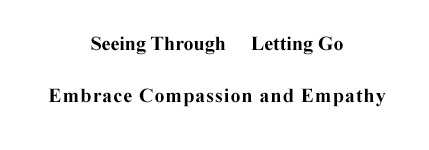14. Epistemology (ix) The Five Aggregates (iii) – The Observer Effect – The Root Cause of Delusion
(Update Pending) We discuss the Observer Effect in this post. The Observer Effect is associated with the Double-Slit Experiment and was discovered in 1801 by…
13. Epistemology (viii) – The Five Aggregates(ii) – Satisfying Buddha’s Soteriological Goal!
(Update Pending) In this post, we explore how a well-known Bodhisattva, Avalokiteśvara, liberated himself from his suffering by practicing Samathavipasyana so profoundly that he realized…
12. Epistemology (vii) The Five Aggregates (i) – Everything That Exists, Exists In The Mind
(Update Pending) This post discusses Buddha’s doctrine of the Five Aggregates. Aggregates are known in Romanized Sanskrit as Skandha. Skandha (Chinese=蘊), according to The Princeton…
11. Enlightenment (ii) – The Mind and the Universe
Having discussed the enlightenment experience of Adyashanti when he verified Nothing but Mentality and the illusional nature of the physical universe upon his enlightenment, in…
10. Enlightenment (i) – Verifying Nothing but Mentality
Having discussed how direct perception leads to enlightenment and that, during enlightenment, knowledge of the information embedded in the mental constructs of everything in the…
9. Epistemology (vi) The Wordless Flower Sermon
The Flower Sermon (Chinese = 拈花微笑) was a unique sermon that the Buddha delivered. It was unique because Buddha remained speechless throughout the Sermon until…
8. Epistemology (v) Direct Perception – The Path To Enlightenment
(Update Pending) After discussing “How Do We Know What We Know” and the Kalama Sutta, in which Buddha deems that using word-based knowledge is not…
7. Epistemology (iv) The Kalama Sutta
In the previous post, we discussed how humans use inferentially connected word-based knowledge to know what they know. However, according to Dr. Fisch, inferentially connected…
6.Epistemology (iii) – Inference-How Do We Know What We Know?
As this Wikipedia article states, “Epistemology is the branch of philosophy that examines the nature, origin, and limits of knowledge. Also called the theory of knowledge, it…
5. Epistemology (ii) – A Mind-Body Problem?
In my opinion, understanding Buddha’s unique epistemology is so essential that it is crucial to know that “To Understand Buddhism, First Understand Direct Perception.” Therefore,…













